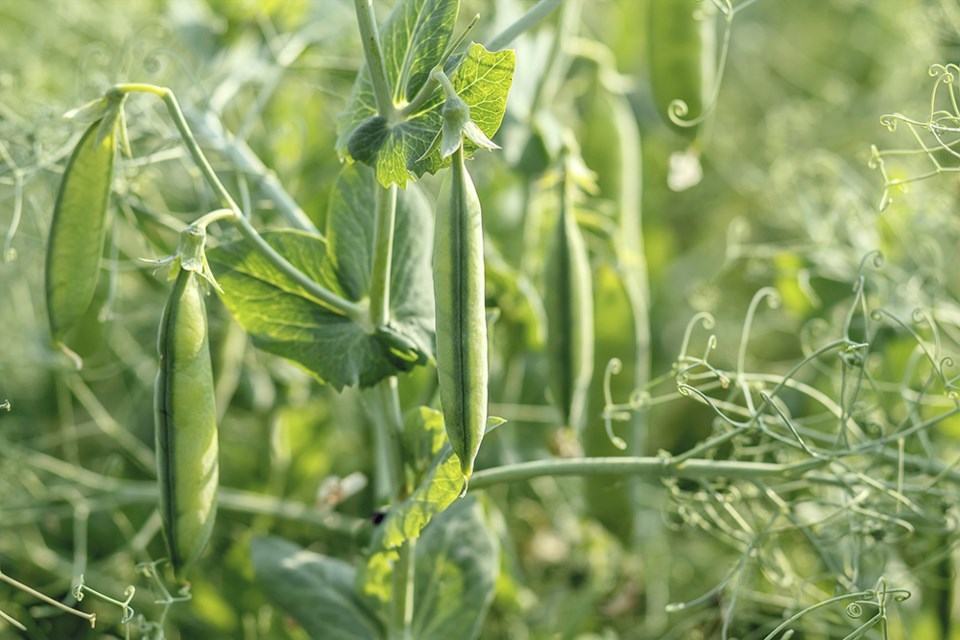Now the weather's beginning to dry a little, this is the ideal time to plant peas. Cool, loose soil encourages fast germination, there's not enough moisture to rot pea seed and voles have little time for leisurely snacks on it or tiny shoots.
For strong, healthy pea crops it helps to apply a dusting of lime. Inoculants also play a role in increasing the food supply available to peas, because they help grow more nitrogen-fixing nodules on their roots.
The more of these in the soil, the richer it becomes, not only for the peas themselves but also for the next plants you grow in that place. Peas are one of the food crops that leave earth better than they found it. That's why peas are sometimes used as a cover crop for loosening compacted soil and enriching it.
But peas have formidable enemies. Voles love to eat peas and the traditional straight rows of food crops let them go directly from one snack to another. This happens more easily when peas are planted early when voles have few other food sources. Planting somewhat later is one protection. Another is sprinkling red pepper over the peas themselves in the row. But not everyone wants to try this because voles that get red pepper in their eyes are in deep trouble and a great deal of pain.
In this climate, peas have few serious diseases. But one potential pea problem is enation, which reveals itself by dwarfed vines with distorted pods. Like many other virus diseases, it's spread by aphids.
Mildew is another illness. It's especially distressing on snow and sugar peas where pods are usually eaten. This fungal malady is best dealt with on food crops by using home remedies. One is a 10 per cent solution of milk mixed in water and sprayed.
No matter what your size garden or lifestyle, there's likely a kind of pea that will fit right in. Broadly there are shelling peas, sugar or snap peas and soup peas. Some speed to maturity in 56 days; others dawdle as much as 78.
It seems the pioneers liked to stretch their season by planting early, mid-season and late peas all at the same time. Then they could enjoy long, harvests as different kinds ripened. This may be worth trying today.
Green Arrow is a long-maturing shelling pea, which resists most pea diseases. One good mid-season variety is the snap pea Super Sugar Snap which resists enation and mildew as does Sugar Ann which is somewhat earlier and has 60 centimetre vines that don't need trellising.
Some peas have fewer leaves, which means that in wide plantings spring gales have less chance of toppling rows. The heritage shelling pea Lincoln is one of these. So is the Manitoba Pea and Sugar Ann. Both of these are so dwarf that planting each type closely together means they intertwine solidly with each other and are said not to need staking (although picking is sure challenging).
Since peas don't mind growing closely together, wide rows grow well and can produce masses of crop. Some gardeners handle wide rows with one support down the middle plus pea netting.
Anne Marrison is happy to answer garden questions. Send them to her via [email protected] It helps me if you can tell me the name of your region or city.



